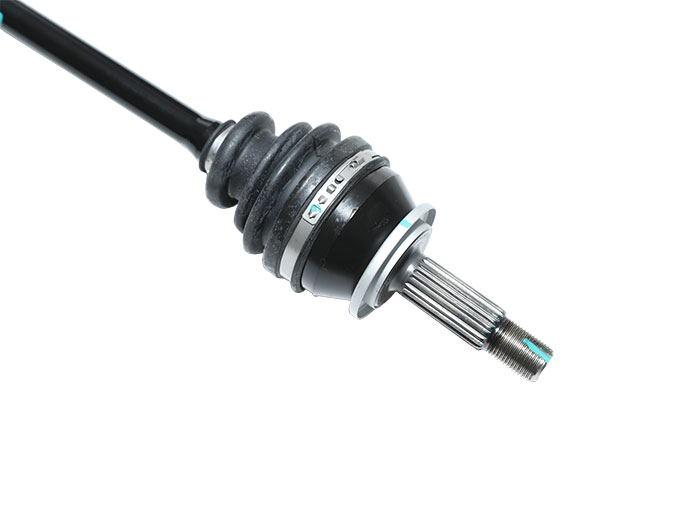The "drive shaft" is a chain of rotational momentum that connects each of the car's wheels to the rest of the engine. It is a shaft having constant-velocity (CV) joints which transfers the rotational torque from one of the drive wheels to the other. It may also be referred to as a half shaft or drive shaft. A typical front Wheel drive automobile has two CV axels (CV shafts) connected to the transmission. The other two axles are attached to the frame of the vehicle through a chain.
A constant velocity axle controls the rotation of the axle to a given value, whereas an eccentric or variable-velocity axle changes the CV angle. CV stands for centrifugal force, and this describes the torque, which is developed by the engine of a vehicle, against the force which the axle applies to the wheels. In general, the higher the angle of CV, the greater is the torque, and the weaker the clutch. In a rear Wheel drive automobile, the CV angle is often quite low because the vehicle is designed to function with a smaller engine.

Both the half and the full CV axle are constructed of casting steel. The inner ring, which forms the outer edge of the axle is known as a center link, while the outside edge or flange links the two sides of the CV. The center link often serves as a bearing and is located inside the engine compartment. The inner ring, which forms the outer edge of the axle, is known as a pinion. The flange links the two outside surfaces of the CV and is typically made of cast iron.
The conventional types of CV joints are comprised of two conical shapes - a round joint is formed between a leaded screw flange and a flat hexagonal joint. A bad CV axle can be caused by wearing out or misaligned conical shapes within the casting. This creates a weak joint and, when driving a vehicle, a weak connection between the pinion and the wheel, due to the weak joint. A bad CV axle usually results in a less than satisfactory performance and often leads to expensive service calls.
Another variation on the conventional CV joint is the torque-flange CV joint. This is a separate, removable boot that fits on top of an existing CV joint. When the shaft is placed into a bad CV joint, the new boot lifts up and away from the opening in the former. As the shaft turns, it pulls the boot upward, causing torque. This type of CV joint is used on many different types of vehicles, including some trucks and cars. The downside of the torque-flange CV joint is that it is a weak point and one that can easily break after continuous use.
A good CV joint, or even a worn one, is seldom the root cause of a bad CV axle. Often, the problem is with the bolts or other parts worn inside the unit, or even the overall condition of the vehicle. Sometimes a vehicle may only need a small amount of CV mismatching parts replaced; other times, the CV mismatching components must be replaced entirely.
Once the CV joint boot has been replaced, the installation manual for the particular make and model vehicle should still provide torque instructions. The torque specifications for the vehicle will specify the maximum pulling force that occurs when the vehicle moves the drive shaft. To test whether the new CV joint boot is sufficient to provide torque, apply slight pressure on the drive shaft at idle. If there is no pressure, the boot is likely too weak. Also, if the shaft moves at all, you may have to replace both the CV joint boot and the hub nut.
The two types of CV joints most often replaced in diesel engines are the constant-velocity joint and the variable-link joint. The constant-velocity joint is used on heavy-duty engines where power and torque are important. Common designs for constant-velocity joints include straight shaft and elliptical flange. Variable-link CV joints, sometimes called smooth runners, allow greater control and greater transmission of power to the final drive; however, they are also more prone to "backfeeding" or randomly firing off when the final drive is in motion.